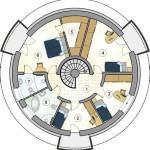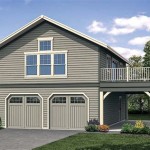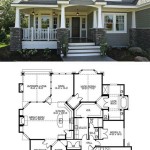Floor Plans For Old Houses
The floor plan of an old house can be a treasure trove of information about its history and the people who lived there. But deciphering these plans can be a challenge, especially if you're not familiar with the conventions of old-house architecture.
Here are a few tips for reading floor plans for old houses:
- Start with the basics. The most important thing to understand is the scale of the plan. This will tell you how big the rooms are and how they're arranged.
- Pay attention to the walls. The thickness of the walls can tell you a lot about the age of the house. Thicker walls are typically found in older houses, while thinner walls are more common in newer homes.
- Look for clues about the original use of the rooms. The size and shape of the rooms can give you a good idea of how they were used. For example, large rooms with high ceilings were often used as formal parlors, while smaller rooms with lower ceilings were probably used as bedrooms.
- Note the location of the stairs. The location of the stairs can tell you a lot about the flow of traffic in the house. For example, houses with stairs in the center of the house were designed to be more formal, while houses with stairs in the back of the house were designed to be more private.
Once you've familiarized yourself with the basics of old-house floor plans, you can start to look for more specific details. Here are a few things to look for:
- Fireplaces. Fireplaces were once the primary source of heat in old houses. The number and location of fireplaces can tell you a lot about the size and layout of the house.
- Built-in furniture. Built-in furniture was very common in old houses. It can range from simple shelves to elaborate cabinets. Built-in furniture can give you a good idea of the style and period of the house.
- Doorways. The size and shape of doorways can tell you a lot about the flow of traffic in the house. For example, large doorways were often used in formal rooms, while smaller doorways were used in more private areas.
- Windows. The size and shape of windows can tell you a lot about the style and period of the house. For example, large windows with elaborate trim were often used in Victorian houses, while smaller windows with simpler trim were used in Colonial houses.
Reading floor plans for old houses can be a challenging but rewarding experience. By taking the time to understand the conventions of old-house architecture, you can learn a lot about the history and character of these beautiful homes.
Here are some additional tips for reading floor plans for old houses:
- Look for clues about the original use of the rooms. For example, rooms with fireplaces were often used as bedrooms, while rooms with built-in furniture were often used as parlors.
- Note the location of the stairs. The location of the stairs can tell you a lot about the flow of traffic in the house.
- Pay attention to the details. The details of a floor plan can tell you a lot about the age and style of the house. For example, houses with elaborate trim were often built in the Victorian era.
- Don't be afraid to ask for help. If you're having trouble deciphering a floor plan, don't be afraid to ask for help from a professional.
Reading floor plans for old houses can be a fun and rewarding way to learn about the history of these beautiful homes. By taking the time to understand the conventions of old-house architecture, you can gain a deeper appreciation for these unique and charming homes.

900 Best Old House Floor Plans Ideas In 2024

New House Floor Plans Old Charm

Plan No R 856 C 1918 Cottage House By A E Stillwell Vintage Bungalows Plans Transitio Bungalow Floor

Altering An Old House Floor Plan

Historic House Plans Floor For Style Homes

Cool Old House Plan Vintage Plans Victorian Sims

Plan 73891 Historic Style With 2 Bed Bath

Find House Plans For Your Old Blueprint Search Nethouseplansnethouseplans

Two Story Cottage House Plan Olde Stone

How To Find Your Old Home Blueprints Smart Ideas And Tips








